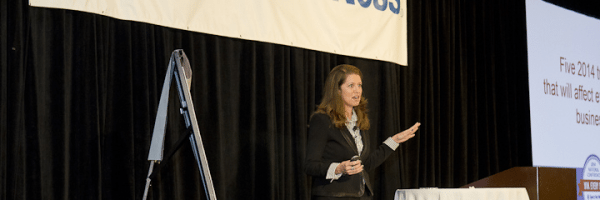As we progress through the start of a new year, I am pleased to share my thoughts on the robust 12 months past and to offer my outlook for the commercial real estate market in 2016. Before I do, I would be remiss if I did not thank the SVN Advisors, staff, and fellow brokers for their contributions to driving our market forward in spite of changing times. I know that I speak for all SVN Advisors and staff when I wish you a prosperous year ahead.
The Year Ahead in the Commercial Real Estate Market
Uncertainty Breeding Opportunity
After several years of increasing domestic economic expansion and an ever-recovering and ever-growing real estate market, 2016 opens with the return of global economic uncertainty as China’s economic growth moderates, energy prices decline significantly, and geopolitical threats such as ISIS, pose a consistent threat to Europe and the rest of the world. While it remains unclear how today’s macroeconomic conditions will impact commercial real estate markets, there are two scenarios. The first is that global market weakness will impact domestic financial markets, the second is that market impacts remain moderate and commercial real estate remains stable and continues to grow due to strengths in core fundamentals. We believe that the second scenario is more probable given the unique opportunities being posed by forces – like demographic shifts – that are proceeding independently of macroeconomic trends.

As for the commercial real estate markets themselves, 2015 was an amazing year. Real Capital Analytics reported a total of $533 billion in sales representing a 23% gain over 2014, and the second highest level of investment volume over time behind the peak $573 billion in activity seen in 2007. Further, the Moody’s/RCA CPPI has given an initial estimate of 12% year over year price appreciation in 2015. These trends are more likely than not to persist throughout 2016 for several reasons. First, global pressures will have two effects: One, keeping interest rates low (despite the best intentions of the Federal Reserve) and keeping foreign money flowing to the United States, a decent amount of which will flow to real estate. Second, fundamentals are strong – in fact, many markets in almost all property type segments experienced rising lease rates and falling occupancies for most of 2015 and are forecast to continue such growth. Third, new supply remains balanced with demand growth and thus oversupply seems unlikely. The lack of increasing new supply given the growth of rental rates amidst falling vacancies can largely be attributed to rising construction costs and relatively tight lending standards for new development.
What happens in the broader United States macro economy is far more difficult to predict. First, the decline in oil and energy prices is absolutely going to cause highly localized and specific harm to those sectors and in turn cause some level of harm to the real estate markets dependent on energy production, such as those in Texas and the Midwest. Historically, oil price declines acted like a tax break or stimulus package for consumers and businesses and the overall economy thus prospered; since the United States has significantly increased its production of oil and energy following the pre-recession oil price spikes, the effect is less certain today. High price markets like those found in the Northeast and California and parts of Florida are likely to benefit the most from energy price declines as it lowers transit and utilities costs and could boost employment via the stimulus effect.
Overall, we expect that the United States economy will grow more slowly in 2016 than 2015 while still remaining positive and thus avoiding recession. Therefore, we do not see any major risks to the commercial real estate markets as long as fundamentals remain relatively strong.
Investment Outlook

Commercial real estate investors who made acquisitions during the downturn are now reaping the benefits of taking such risks. Despite, or in fact, because of these significant gains, many investors and market participants are now openly opining on the possibility of a new downturn in the real estate asset cycle. We do not find such arguments to be very compelling for several reasons. First, many of the causal conditions present before the 2008 economic turmoil are not present in 2016 and are not likely to appear in the near-term horizon. The most meaningful indicator of a potential bubble or overpricing of commercial real estate is the spread between cap rates and underlying treasury rates. According to RCA, cap rates averaged 6.5% nationwide during 2015, while the 10-year treasury rate averaged in the low 2% range for most of 2015 and early 2016. This implies a spread of over 4% (or 400 basis points). Today’s spreads are significantly higher than those observed pre-crash where they averaged slightly below 200 basis points and even below 100 basis points for class A assets in top markets according to the commercial real estate economics researchers at the Lakemont Group. In summary, the market is not presenting the same risk/return profile observed before the 2007 peak of pricing. Further, debt availability is far more constrained post crisis with total leverage utilization down significantly (in fact, the percentage of all equity transactions in many markets is staggering) and therefore the risk of default is relatively low for most investors and deals. Thus, we believe pricing in commercial real estate markets does not represent a new bubble or other significant source of risk.
This conclusion is further strengthened by our belief that interest rates will not experience significant upward pressure in 2016. The energy sector declines and overall global pressures will likely start impacting GDP and employment statistics by the end of the first quarter of 2016. The likely result will be the Federal Reserve slowing or even pausing further rate increases in 2016. Debt markets should remain open and active in 2016 as they did in 2015. If debt costs do not rise and fundamentals remain stable or growing (even if at slower rates than in 2015), it is not logical to expect price declines. In fact, we expect modest price appreciation for most markets.
Top Markets for Property Sales in 2015
(Ranked in terms of total dollar volume)
- Manhattan – $55.9B
- Los Angeles -$27.6B
- Chicago – $22.6B
- Dallas – $19.5B
- Atlanta – $16.9B
- Boston – $16.4B
- Seattle – $14.9B
- San Francisco – $14.3B
- San Jose – $12.5B
- Phoenix – $12.1B
Source: Real Capital Analytics
The list of top markets for commercial real estate sales in 2015 appears relatively similar to lists for the past 5 years with the new additions of Phoenix and San Jose. These markets attract institutional capital from private equity, REITs, and foreign buyers and have been the most competitive to find deals, especially with attractive yields. Overall, given the increasing level of global macroeconomic uncertainty, we expect these and related top tier markets to gather an increasing share of commercial real estate investment activity in 2016 as money moves to areas of perceived lowest risk.
Top Growth Markets for Property Sales in 2015
(Ranked in terms of YOY percentage increase in sales volume)
- DC/Virginia Burbs – 121%
- Baltimore – 71%
- Orange County – 70%
- Northern New Jersey – 69%
- Seattle – 68%
- Orlando – 68%
- Portland – 61%
- Central California – 60%
- Inland Empire – 58%
- Phoenix – 54%
Source: Real Capital Analytics
The above list of markets may present some of the best opportunities for growth and price appreciation given their relative strength. Capital is starting to rotate to these markets and further price increases may potentially follow. There will likely be expansion in cap rate spreads between primary and secondary markets in 2016, especially if foreign capital flows increase as predicted and those funds seek assets predominantly in only the largest markets. Thus, yield-seeking investors will likely find the best opportunities in the non-top tier markets (such as most of those on the list above).

Beyond market, property sector is equally important in terms of forecasting investment performance. According to RCA, the apartment sector has been the top performer, up 38% from the peak (defined as Q4 ’07), followed by office, up 18% from the peak. Retail and industrial have lagged at -1% from peak and up 3% from peak respectively but performed well in recent years. We find it impractical to give overall guidance for property sectors on a nationwide basis and encourage investors to work with Advisors who are knowledgeable about each sector in their respective market as finding the best performer can be challenging. Industrial properties offer a prime example of such quandaries – industrial real estate in energy markets should face decreased space demand as that sector contracts in 2016. By contrast, industrial distribution facilities in areas of high population growth (like Florida) may over-perform as retailers shift distribution from stores to warehouses as online sales continue to dominate.
Trends to Watch
Perhaps the most discussed trend in commercial real estate in recent years has been the Millennials, the age cohort who are changing work and living arrangements across the nation. A relatively less covered demographic trend of greater size and perhaps importance is the aging population. According to data from the U.S. Census Bureau and analyses by the Lakemont Group, the overall population in the United States is forecast to grow by 11.55% in the next 15 years while the population above the age of 75 is forecast to grow 69.21%. In fact, those over 75 years old will represent almost 10% of the population by 2030 (those above 65 will be over 20% as well). While many real estate market participants correctly use these statistics to justify the need for more senior housing, there are actually many other real estate opportunities to service this growing segment of the population. Market rate apartments with features and locations this demographic wants, can use, and can afford is one such example. Properties to house medical services and activity retail is another. We encourage investors to think long-term when making acquisition, disposition, and asset management decisions. This is one long-term trend that could shape demand for many property types for decades into the future.
Concluding Thoughts
2016 has started with higher levels of volatility in United States equity markets as a result of justifiably significant fears of global economic pressures causing falling demand domestically. While some investors are taking a fearful stance, we see a different outcome. It is probable that global uncertainty will serve to keep interest rates low and allow for growth of fundamentals in the commercial real estate markets and in the broader domestic economy. Furthermore, even in the event of a domestic economic slowdown, the global uncertainty could lead to lower interest rates and even greater inflows of foreign capital, supporting the domestic commercial real estate market (the current risk / reward proposition of U.S. investment is unbeatable).

If such occurs, it is likely for 2016 to be another strong year for commercial real estate transaction volume, net operating income growth, and even price appreciation; however, expect all to grow at a slower rate in 2016 than in 2015. Investors and property owners should be aware that today’s commercial real estate economy has little in common with previous downturns. As such, we believe that the risk and return profile of commercial real estate is still attractive in 2016 and is likely to remain so for at least the near-term horizon.
Follow Kevin Maggiacomo on Twitter: @Maggiacomo.
[bctt tweet=”We believe that the risk and return profile of commercial real estate is still attractive in 2016. #CRE “]

